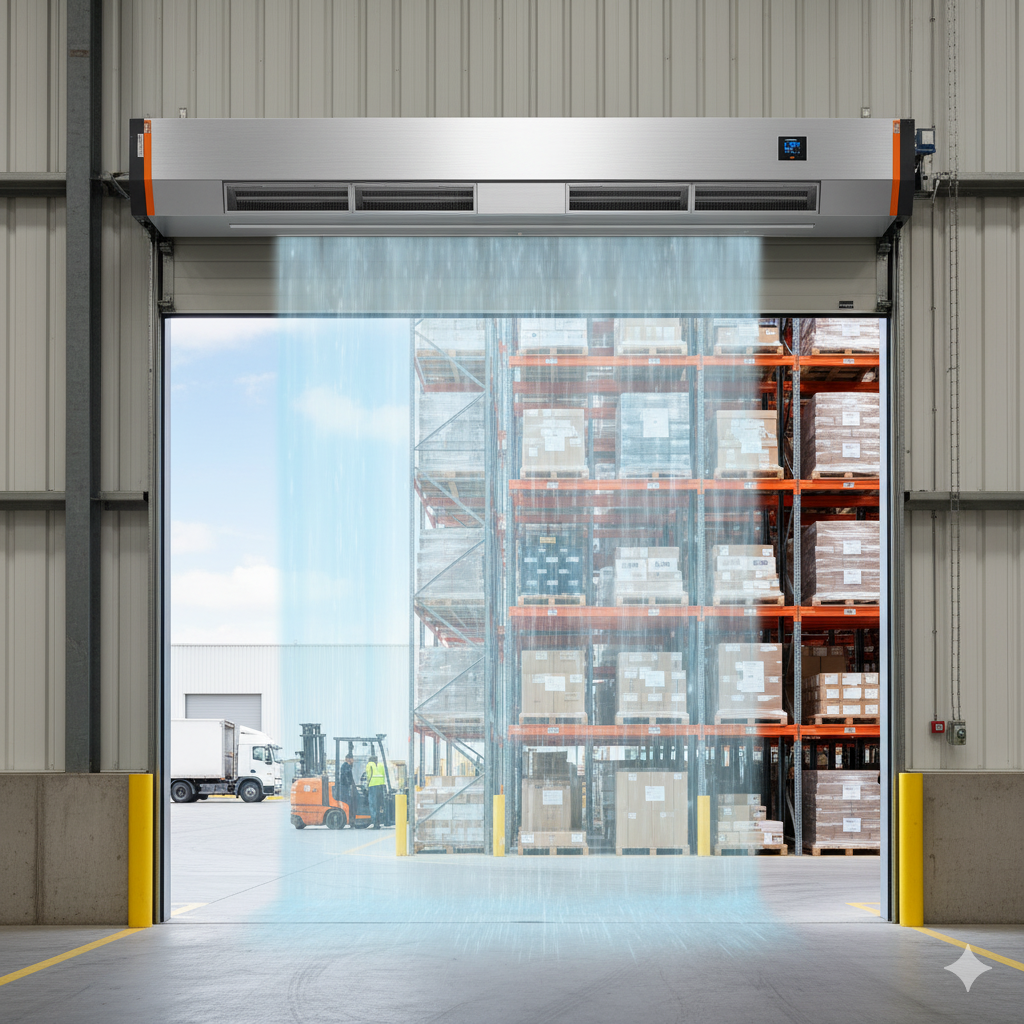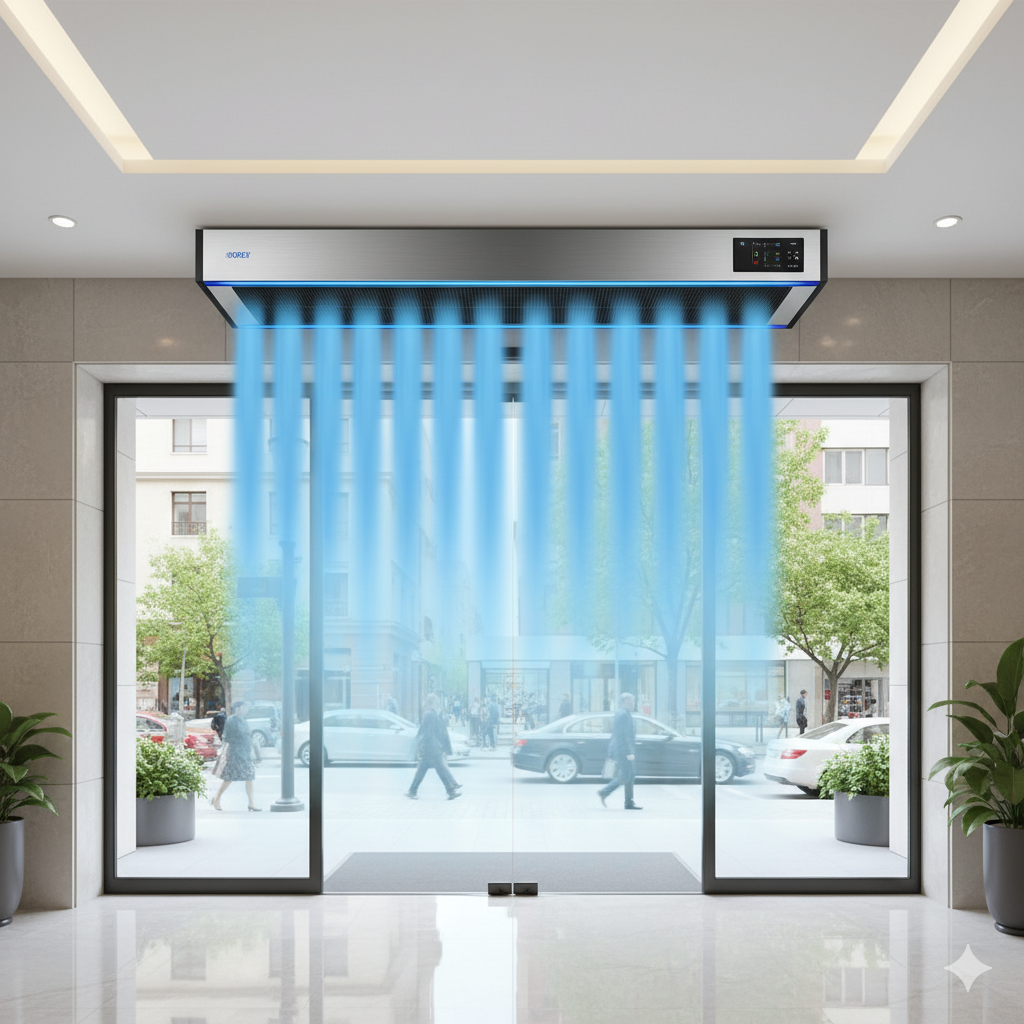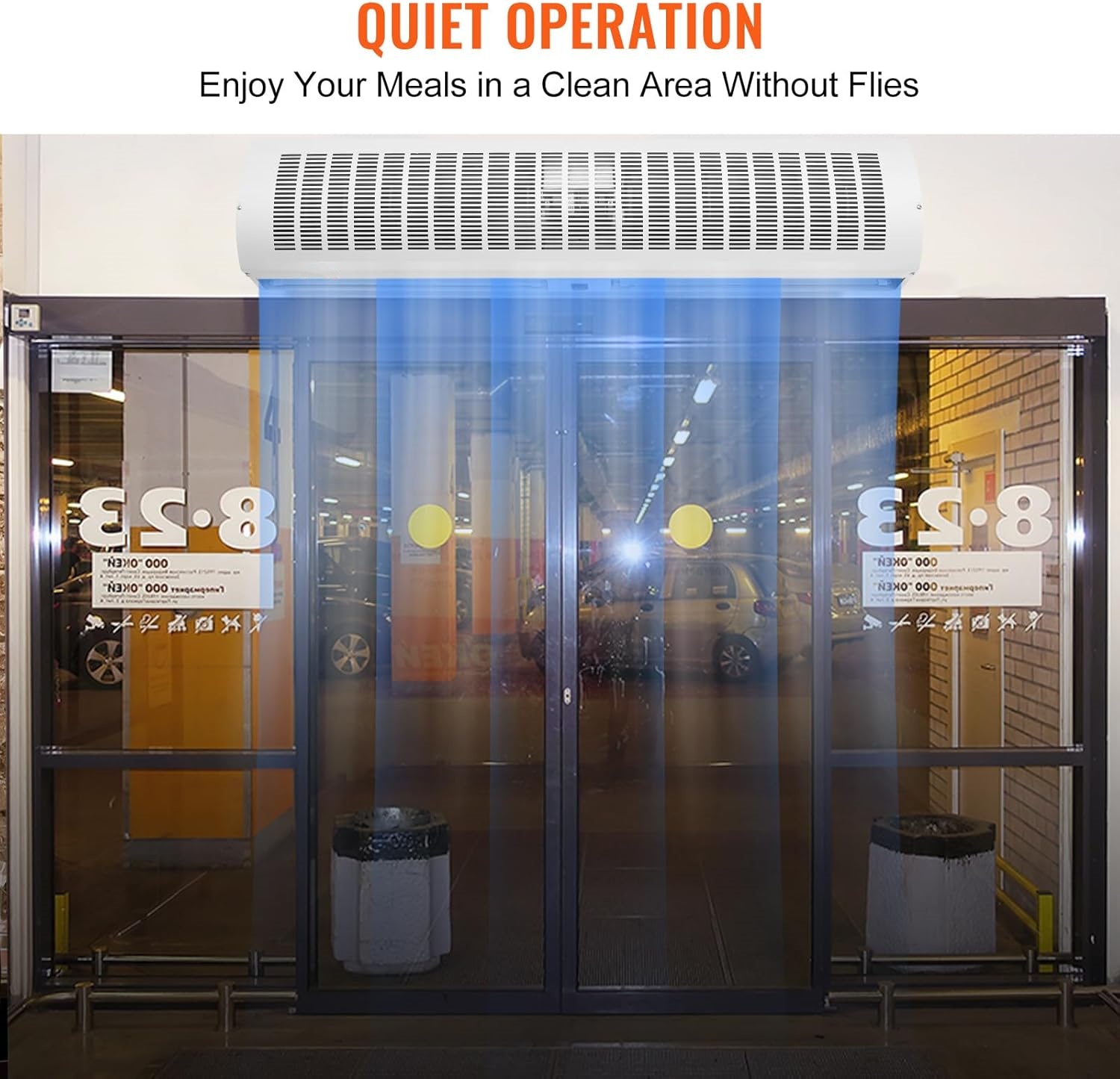Warehouses, distribution centers, and industrial facilities face a unique and persistent challenge: maintaining a stable and controlled indoor environment despite having large overhead doors that are frequently opened. Every time a loading dock door opens to allow for shipping or receiving, it creates an opportunity for conditioned air to escape and outside elements to enter. This exchange can lead to significant energy loss, temperature fluctuations, and the intrusion of pests and contaminants. An effective and increasingly popular solution to this problem is the installation of an air curtain for warehouse door, a powerful device that creates an invisible barrier of air to seal the opening and protect the interior space.
Understanding the Mechanics of an Air Curtain
An air curtain, also known as an air door, is a machine designed to prevent air or contaminants from moving from one open space to another. Its operation is based on a simple yet highly effective principle. A powerful fan, typically housed in a casing above the doorway, draws in ambient indoor air and accelerates it through a directional nozzle. This process creates a high-velocity, uniform stream of air that flows down across the entire width of the opening. This continuous 'curtain' of air is strong enough to act as a non-physical barrier, effectively separating the indoor and outdoor environments. While the primary function is separation, some models can be equipped with heating elements (electric, hot water, or steam) to temper the air, providing supplemental warmth and preventing cold drafts during winter months.
The Multifaceted Benefits of Warehouse Air Curtains
Investing in an air curtain for a warehouse door provides a wide array of operational and financial benefits. The most significant advantage is energy conservation. By preventing the escape of heated or cooled air and blocking the influx of unconditioned outside air, air curtains dramatically reduce the workload on a facility's HVAC systems. This translates directly into lower energy consumption and substantial savings on utility bills, often providing a rapid return on investment. Furthermore, these devices are instrumental in pest and debris control. The forceful stream of air is a powerful deterrent against flying insects, dust, vehicle exhaust fumes, and other airborne pollutants, helping to maintain a cleaner and more hygienic environment. This is especially critical for facilities that handle food products, pharmaceuticals, or other sensitive materials where contamination is a major concern. Employee comfort and productivity also see a marked improvement, as workers near doorways are shielded from uncomfortable drafts, extreme temperatures, and outdoor elements, creating a more stable and pleasant workspace.
Enhancing Safety and Operational Efficiency
Beyond environmental control, air curtains contribute significantly to warehouse safety and workflow. Unlike physical barriers such as plastic strip doors, an air curtain provides a completely unobstructed opening. This clear line of sight is crucial for forklift operators and personnel, reducing the risk of collisions and accidents. The unimpeded access allows for a faster and more efficient flow of traffic, materials, and people, which can streamline loading and unloading operations. Plastic strips, on the other hand, can become dirty, scratched, or torn, impairing visibility and potentially getting tangled in machinery. They also make direct contact with people and products, which can be a hygiene concern. An air curtain for warehouse door eliminates these issues, offering a modern, hands-free solution that supports a safer and more productive operational pace while also helping to maintain specific climate conditions required for product integrity.
Selecting the Appropriate Air Curtain for Your Facility
Choosing the right air curtain is essential to maximize its effectiveness. Several key factors must be considered during the selection process. The first and most important is the dimension of the door opening; the unit must be at least as wide as the door itself. The mounting height—the distance from the floor to the unit—is equally critical, as it determines the power and velocity needed for the airstream to reach the floor and form a complete seal. Warehouses with very high doors will require more powerful, industrial-grade units. Another consideration is the environmental conditions, such as prevailing wind speeds and the pressure differential between the inside and outside of the building, as strong winds can compromise the air barrier. Finally, the specific application will influence the choice. For instance, if the primary goal is insect control, a high-velocity ambient unit may suffice. However, in colder climates, a heated air curtain for warehouse door is often recommended to provide comfort and prevent icy floors near the entrance, further enhancing safety and employee well-being.





